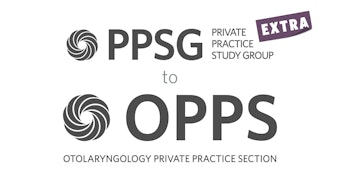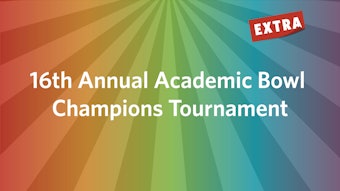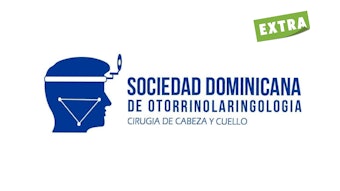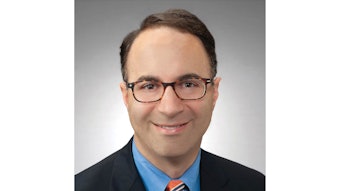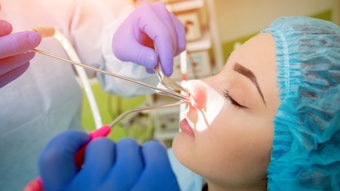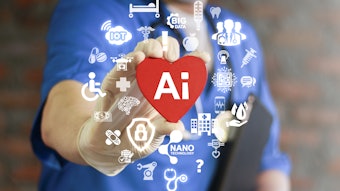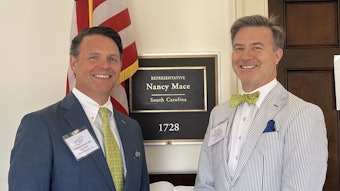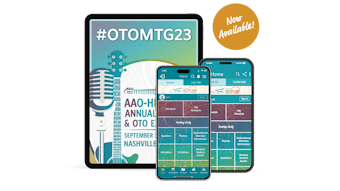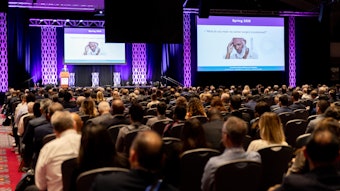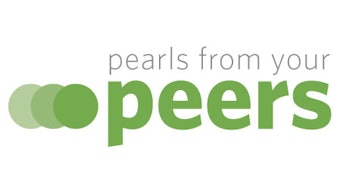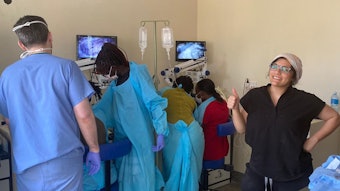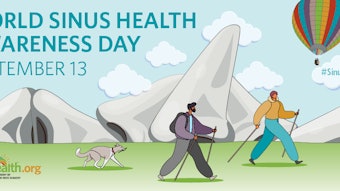Posterior Nasal Nerve Ablation Techniques
Pro tips for patient treatment.
Christie Barnes, MD, member of the AAO-HNS Rhinology and Paranasal Sinus Disease Committee
“Doc, my nose drips constantly. It’s embarrassing! I have boxes of tissues everywhere, including up my sleeves and in every pocket of my purse.”
This scenario likely sounds familiar to many reading this article. This is an example of the experience of just one of over 87 million Americans who suffer from chronic rhinitis.1,2 Not only do patients with chronic rhinitis complain of rhinorrhea but also of postnasal drip, nasal congestion, sneezing, and pruritis. Otolaryngologists for years have tackled these problems with a barrage of therapies, sometimes with little to no improvement. For the patient who has undergone an allergy workup and management and has tried optimal first-line medical therapies, including saline sprays or rinses, topical steroids, topical or oral antihistamines, oral or topical decongestants or intranasal anticholinergics and failed, there is another option supported by the American Academy of Otolaryngology–Head and Neck Surgery (AAO-HNS).
Before the new posterior nasal nerve (PNN) ablation techniques, vidian neurectomy was the only procedural option for medically refractory chronic rhinitis. This procedure, which carries a significant risk of dry eye and can be technically challenging, helped to reduce parasympathetic innervation to the nose resulting in decreased congestion and rhinorrhea. Modern techniques now focus on ablating the distal branches of the vidian nerve, targeting only the sympathetic secretory fibers easily through the nasal cavity and sparing the lacrimal contributions. There are several techniques used to ablate the nerve, including cryotherapy and radiofrequency ablation. PNN ablation in either form has been described as a safe and effective treatment supported by a recent the AAO-HNS Position Statement, PNN Ablation for the Treatment of Chronic Rhinitis.
I recently surveyed several colleagues nationwide who have a wealth of experience with PNN to garner tips and tricks for tackling this problem. All surveyed agree on the importance of ruling out other causes of these symptoms and first confirming a diagnosis of chronic rhinitis in a patient with a clinically significant TNSS. Most patients who walk into my academic tertiary care office with this complaint have had at least a minimal trial of a topical steroid or oral antihistamine from a primary care physician. If not, I recommend starting there and working through the first-line modalities, as there is good data to suggest that most people will respond.
I typically then recommend a four- to six-week trial of these therapies with good compliance and see them back to assess. I will recommend allergy evaluation and treatment if that is indicated. I and others surveyed do find that those who respond to ipratropium bromide to some extent tend to have the best outcomes post-procedure. If they are interested in an alternative to daily medications, then I consider a discussion about posterior nasal nerve ablation.
As with any procedure, patient selection is paramount. After a trial of first-line medical therapy and discussion about the option of a PNN ablation to address the rhinitis, it is necessary to determine the best setting for this procedure and whether or not concomitant procedures need to be done. As part of my workup for these patients, I always perform a nasal endoscopy to rule out any other contributing or confounding factors such as CRS or CSF rhinorrhea. This endoscopy is the first step in assessing if a patient is a good candidate for an in-office procedure. In the occasional patient with anxiety or scope aversion, I would not consider an office procedure. Also, anatomic issues such as a severely deviated septum or severely hypertrophied turbinates should be identified prior to considering an in-office procedure. Occasionally, these findings may warrant addressing these with septoplasty or turbinate reduction surgically at the time of PNN ablation. Endoscopy will also help you rule out patients in whom PNN is potentially contraindicated, such as patients with atrophic rhinitis, autoimmune vasculitis, or other confounding condition.
Joshua B. Greene, MD, from Ascension St Vincent in Indianapolis, Indiana, adds, “Caution and stronger consideration should be made for patients on anti-coagulation medication that are unable to stop around the time of the procedure, medical conditions that place them at higher risk of have procedures if considering OR management, and allergies to local anesthetic.”
When counseling your patient, it is important to discuss the current expected outcomes and risks as well as what to expect during (if performing PNN ablation in the office) and after the surgery. Recent studies on long-term results for both cryotherapy and radiofrequency ablation indicate that the benefit is sustained to at least two years post-treatment.3,4 Possible complications include pain, epistaxis, and crusting.
David C. Brodner, MD, from The Center for Sleep, Allergy, and Sinus Wellness in Boyton Beach, Florida, said he has had, “A success rate of over 95% with almost every patient experiencing reduction in PND/rhinorrhea, and around 80% have been able to reduce or stop taking Atrovent.” He goes on to say that to get those good results, he will, “[U]se the Clarifix (cryotherapy device) twice on each side with the first treatment over the sphenopalatine area. The second treatment is 1 cm anterior and slightly inferior over the tail of the inferior turbinate to address PNN branching.”
The most common complaint I’ve heard is a headache. Dr. Brodner has a pro tip for that as well: “If an 'ice cream headache' occurs (happens around 20% of the time), give the patient something hot to drink (coffee or tea is what we use). This helps facilitate headache resolution much faster. Usually lasts less than an hour.”
Dr. Greene’s pro tip for the procedures performed under local anesthesia is to help minimize the risk of developing an “ice cream headache” are the use of pre-procedural Gabapentin and a sphenopalatine block.
Post-procedure, I have my patients use saline nasal sprays frequently and avoid nose blowing for a few days, and I generally recommend acetaminophen and ibuprofen for any discomfort.
Reimbursement for these procedures appears to be mixed in speaking with colleagues across the country as currently there is no formal CPT code for this procedure. AAO-HNS recommends using the unlisted code 30999. Dr. Greene reminds me that if either is performed in the OR, you are able to submit the approved C-code (C9771). He added that it is anticipated we will see the introduction of a formal category 1 CPT code for each procedure: cryoablation and RFA In January 2024. However, it is tough to say when we can expect insurers to implement these codes into their medical policies. It appears some insurers currently will cover in-office procedures while others do not, and some have specific criteria to consider coverage, so check with your local providers.
References
- Settipane RA. Epidemiology of vasomotor rhinitis. World Allergy Organ J 2009; 2: 115–118. [Values updated for 2020 world population estimate of 7.8 billion]
- Settipane, R. A. & Charnock, D. R. Epidemiology of rhinitis: allergic and nonallergic. Clin Allergy Immunol 19, 23-34 (2007).
- Ow, R. A., O’Malley, E. M., Han, J. K., Lam, K. K. & Yen, D. M. Cryosurgical Ablation for Treatment of Rhinitis: Two-Year Results of a Prospective Multicenter Study. Laryngoscope 131, 1952-1957, doi:10.1002/lary.29453 (2021).
- Ehmer, D. et al. Long-term Outcomes Following Temperature-Controlled Radiofrequency Neurolysis for the Treatment of Chronic Rhinitis. Allergy Rhinol (Providence) 13, 21526575221096045, doi:10.1177/21526575221096045 (2022).


